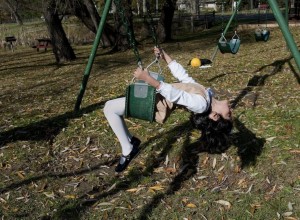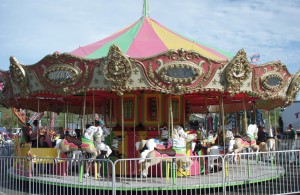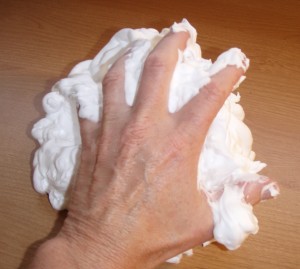Sensory Processing explains how the nervous system receives messages from the senses then triggers thoughts, feelings and action. The brain is bombarded with messages from the eyes and ears (sights and sounds). We also feel things inside and outside of our bodies (a soft sweater, a stomach ache). Temperature, tastes and smells add to the mix.
In addition to these familiar senses, we have internal senses that help us know what’s going on with our bodies.
- We automatically know whether we are sitting or standing, moving or standing still.
- They help us make the body adjustments necessary to move around the way we want to.
- These sensory motor senses also have an important influence over how our brains work.
Sensory Regulation:
Our brains are capable of absorbing and managing the billions of stimuli bombarding us every second. This amazing ability to process an ongoing blizzard of information contributes to how well we can pay attention to things important to us. It also helps us know what to ignore. This ability to automatically absorb and filter information relates to the brain’s ability to “Regulate.”
When we are tired, we have a diminished ability to “Regulate.” As a result, things like dripping faucets may irritate us. Coping with intense experiences (a shopping mall) while remaining engaged or being able to disengage depends on how well we can regulate all the sensory stimuli bombarding us at any given time.
Similarly, infants and children maintain an internal equilibrium by modulating or regulating sensory stimulation from the environment. Some babies become fussy easily and it is difficult to soothe them. Others may get startled by a loud noise but can calm down once the uncomfortable sensation is gone.
The senses described below have primary control over our ability to “Self Regulate.” Understanding how each of these senses work is the key to choosing activities that help with regulation of the brain and the ability to cope with the flurry of stimuli we experience each moment of our waking days.
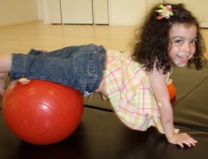 Proprioception:
Proprioception:
We take for granted that we know where our hands are or whether we are lying down or sitting. We don’t need to use our eyes to figure this out. Figuring out how our bodies are positioned without visual attention occurs because we have proprioceptor nerves scattered throughout our bodies, specifically in every joint (neck, shoulders, hips, spinal cord-every vertebrae, etc.).
Along with giving us our “body sense,” proprioceptor nerves send messages to brain cells that are primary filters for the brain. As we move and stimulate these nerves in the joints, we enhance our ability to organize information in the brain.
This section reviews activities to build strong body awareness. It also guides the caretaker in choosing the right activity to calm children down and activate the filtering system in the brain for better attention!
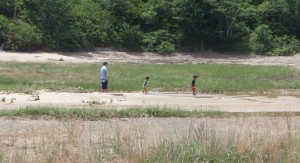 Kinesthesia:
Kinesthesia:
As we reach for a glass of milk, we automatically know when to slow down and then carefully grasp the glass. Toddlers are not as successful and frequently knock over the glass. Thus, the advent of sippy cups and plastic containers.
The muscles in the arms and hands have nerves that send quick messages to the brain, helping to figure out how fast or slow to move and how wide to open the hand in order to grasp the cup without knocking it over. In fact every muscle in the body is sending messages to the brain with every muscle contraction. The more we move, the better the brain gets at executing our planned actions with precision.
Kinesthesia is essential to motor coordination. Feeling how the muscle is moving and how to control the movement is critical for swinging a bat successfully and climbing stairs without falling. In addition, these nerve cells connect in the brain with arousal centers. As we move, we activate the “wake up” parts of the brain. We know this intuitively. When we stretch or stand up after a long meeting, class, the 7th inning stretch and intermissions, we reenergize not just our bodies but our brains as well.
This section provides a better understanding of how movement can help facilitate attention and positive energy in children throughout the day.
Vestibular System:
Some of us get a rush from fast rides, roller coasters and other thrill seeking activities. Others cringe at the thought of spinning and a simple merry-go-round ride will lead to physical misery for the remainder of the day. You have your vestibular system to thank for that!
This very powerful system influences basic physiological systems (breathing!) as well as figuring out if the train you are sitting on moves or if the train on the next track is rolling out of the station. This section helps to demystify this very complex sense organ and provides guidance in how to incorporate vestibular based activities like swinging and spinning into children’s play in a safe and brain enhancing way.
Tactile (Touch):
We are all familiar with the sense of touch. This sense tells us whether something is soft or scratchy and protects us from injuries such as burns and cuts as our skin tells us to stop touching dangerous things.
The touch system helps protect us in many ways. As a result it not only helps us figure out how things feel, these sensations can tinker with our brains in powerful ways. As the protective touch system alerts us to possible danger, it can activate our “Fright Flight Fight” system, leading to stress reactions.
This section helps us understand the delicate balance between the highly alerting sensations touch can bring along with its power to calm and relax us. The “How” and “Why” of choosing activities to enhance the touch system is reviewed. Learn how to identify whether a certain sensation excites, alerts, calms or stresses a child. Understand why some children immerse themselves in great big messes and others fuss about touching many things.

